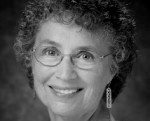By Sondra L. Shapiro
From the local supermarket to Walt Disney World, there seems to be more gray hair in the crowd, a sure sign America has a large aging population. The facts back up the perception since individuals age 65 and older now make up 13 percent of the total population, compared with 12.4 percent in 2000 and 4.1 percent in 1900, according to federal government statistics.
 To acknowledge the nation’s oldest citizens, in 1963 President Kennedy proclaimed May as Older Americans Month (originally called Senior Citizens Month). At the time, only 17 million Americans were age 65 or older. About a third of older Americans lived in poverty and there were few programs to meet their needs. May offers an opportunity to pay tribute to the demographic through ceremonies, events, fairs and other activities.
To acknowledge the nation’s oldest citizens, in 1963 President Kennedy proclaimed May as Older Americans Month (originally called Senior Citizens Month). At the time, only 17 million Americans were age 65 or older. About a third of older Americans lived in poverty and there were few programs to meet their needs. May offers an opportunity to pay tribute to the demographic through ceremonies, events, fairs and other activities.
This year’s theme, “Get into the Act,” also marks the 50th anniversary of the Older Americans Act (OAA). The law, which was signed in 1965 by President Johnson, provides a nationwide aging services network and funding that helps older adults live with dignity in the communities of their choice for as long as possible. Through Area Agencies on Aging, these services include home-delivered and congregate meals, caregiver support, community-based assistance, preventive health services, elder abuse prevention and much more. The law also gave birth to the National Family Caregiver Support Program and the Native American Caregiver Support Program.
The OAA was one of the domestic programs established under Johnson’s Great Society Programs, which also spawned Medicare and is likely a factor in the nation’s life expectancy spike from 70.22 in 1965 to the current all time high of 78.8 years.
Older Americans Month offers an opportunity for agency administrators to publicize the existence of these home- and community-based services since seniors and those who care for them are often in the dark about their existence. Many families don’t consider the need until there’s a crisis — then, the search is stressful and likely not as successful as it could be.
There can never be too much publicity when it comes to such programs as home care, caregiver respite, congregate or home-delivered meals and other services that allow individuals to stay independent. Public awareness can help ensure adequate funding.
Community-based care is usually less expensive than institutional alternatives, yet, federal and state lawmakers have historically cut budgets for the very programs that allow frail seniors to live independently. Knowledge can provide family members with the incentive to contact the governor or their representative to urge financial support.
The “Get into the Act,” theme also encourages older adults to take charge of their health, get engaged in their communities and make a positive impact in the lives of others. One of the best ways to hit all these buckets is to volunteer. A 2009 Mayo Clinic study found that older people who volunteer have lower rates of heart disease and live longer than peers who don’t volunteer.
Volunteering can boost mental health. It’s a great way to stay connected socially; and those social connections help buffer stress and get a person through hard times. Also, volunteering can provide a sense of purpose and vitality, key elements in helping stave off the depression that sometimes accompanies aging and isolation, according to the study. Those interested can start with HandsOn (www.handsonnetwork.org), the nation’s largest volunteer network, which connects volunteers to more than 70,000 nonprofit agencies that need their help.
While Older Americans Month is essentially a publicity campaign, the celebration is also a morale boost for the millions of people who have selflessly raised children, fought in wars and engaged in public service. Often, older Americans are made to feel inadequate and unappreciated — hopefully, national acknowledgement assuages some of that.
Most importantly, the month should reinforce the message to lawmakers that OAA programs need adequate funding that meets the needs of the nation’s aging population.
Sondra Shapiro is the founder of Thefiftypluslife.com and the former executive editor of The Fifty Plus Advocate. She can be reached at sshapiro@thefiftypluslife.com.







